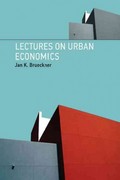Please complete a one page paper examiningoneof the following issues from your assigned reading this week:
- Pointing to the tough realities, such as globalization, faced by one or two nations studied during the past 10 weeks, explain what you think Richard Feinberg meant about how we try to solve problems when he said: "Sometimes I wonder if we put all the problems (of the world) on a circular board, all the proposed solutions on an outer wheel, and just spun away, and implemented each solution wherever it stopped on the wheel, whether we wouldn't do as well."
- Albert Einstein said that unless we change our "modes of thinking" about political issues, we are headed toward "unparalleled catastrophe." Do you agree or disagree with this statement? In your answer, please refer to Table 16.1 in Chapter 16 of your textbook.
466 Part 5 Conclusion A consideration of thc ve big questions and paradigm shifts next leads us to systcms titeory' which I introduced in Chapter 1.112ch and in suhscqncnt clmptt'rs, l uscd ir largely as a lens through which you could make sense of [hL' thousands of cvcnts, dates. people, and places intro- duced since then. Now, wt- return to .systcms theory and view it in. another light lit-cause it could be an alternative to state- and power-centered models of political life. It allows us to recongure clcmcnrs ofthc old paradignk including the state. and power-into 11 new lens just like the Coptmitans came to the undtrstanding that the earth and the othcr planets circled around thc sun. As thc Copernican revolution did for astronomy, basing political analysis and activity on systems theory leads its in qualitatively different ditcctiotts, an Exploration of which will talu- up tire rust of this chapter. Although systcms theory is currently not \\vi cl)! uxcd in political scicncc, it is at thc heart of most other social and natural scicnccs, because fccdbttclt is {hit 'xcy to underw standing how any organizatinn or organism changcs over timc. In that smsc. it is particularly import it because it draws our attention to the often convoluted ftctibacit loops among the componcm parts of a country's or any unit's political system [see Figure Ll on page 4) and how they move a society in one (if thrcc main directions.'l'nus, SySlCH'J can: I Stay in balance. A homcosmric system remains stalilc in much tilt: same way that a thermostat regulates the temperature in :1 housc. iticitlcnmlly. the people wlm brought systems (htol'y into political science thought that this was the best we could do. I Decay or dcgcntratc Many of those samc political scientists herd listed under totalitarian regimes or fought in Worlo' Wat ii, which led them to search for ways of avoiding the kind of collapse that 1:6 to World War ii and all of its horrors. I Grow. Business cxccutivcs, in particular, tcli us that systems can improve their performance and {mm over timc' whatever one means by \"improve" and \"lcarn.'"l'his was the aspcct missed by the scholars who pioneered the use of svstcms thcory in PDlll.LE'l scienc in thc 19505 and 19605. it may also he a 'lml we need to focus on more in this age of gluhalimtion. i But the most important reason to focus on systems theory is that it uses intcrdcpcndcncc as its starting paint. Each component of a system is connected directly or indi- rectly to cwry other one in a complex and complicated network. If you change out: piece of a system, everything TABLE 115.1 {unites ' PRINTED BY: dawnclle.schmidt@smail.rasmussen.edu. Printing is for personal, private use only. No part of this book may be reproduced or transmitted without publisher's prior permission. Violators will be prosecuted and everyone clsn: will change with it. As thc clich puts it, \"what goes around comes around.\" TWO Perspectives To see how systems theory can, lead us in new directions hath mirmativrly and empirically. think about (or better yet do it with some nf your classmates) an cxcrcsc I have used in hundwtis of classrooms and public workshops i divide the participants into small groups and ask them to tlsctms why instances of interpersonal, national, and inter national conllict they icnow about did not tum out well. Thcn, l rcassttmhic the larger group and have someone from each group sum up what they had talked about. No group i ever worked with had trouble coming up with long lists of causes for each type of conict. As 1 write their ideas down on a whitchtmtd, the participants sac that they can he collapsed into 2: handful of clusters that an: strikingly similar for all three lcvtlsgvnicli are summarized he lcit-hnn column olTublc 161i. Thuy givc us a good ; rst glimpse of mar political prohlcnrsolving paradigm or, terms. our \"inodcs of thinking? H'. l . ln nnc lnrm or another, the scarcity oi'rcsoutccs undcr- 'cs almost all instances of conflict rhsr mum: to political scientists and average citizens alike. Eccansc then: is not cnough money or prestigc or clean air to go around, we compete with each other for them. The rest of the tnttits in that column rcflcct :i rather consistent and common mindset most people use whun confronting most conicts most of the time. if you have m ken an international relations courscr you have probably encountered ways of thinking that parallel the rst col- umn. What is; instructive for our purposes as stuclcnrs of comparative politics is how widespread these values and assumptions arc for all types of contentious issues and the conflicts they spawn. Tilt: people who have taken part in this cxtrcisc over the years assume that the parties to the dispute rm: all trying Values 3 (5 Ways of l'h' kt Stringmumes ' ' \" Striated! ' Shqrcte'rmr imam ' ~ {at enemy tantra town at Li'mi tbnpetamn. lick 'cmittct'is bat,\







